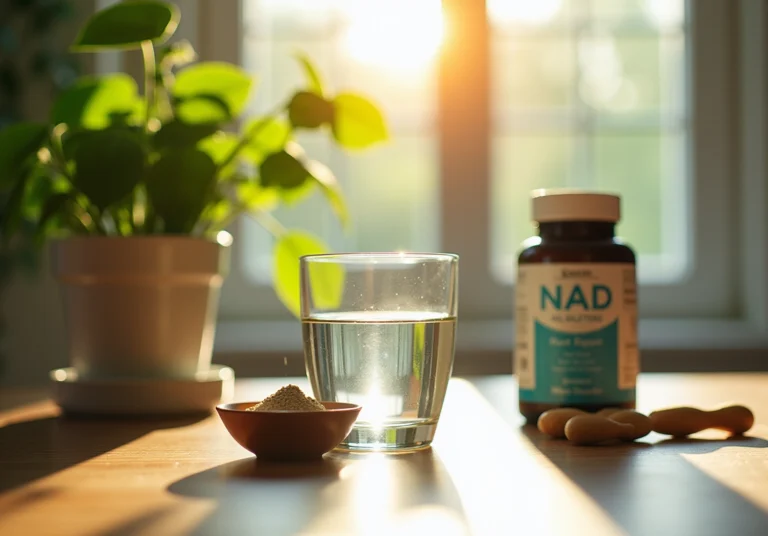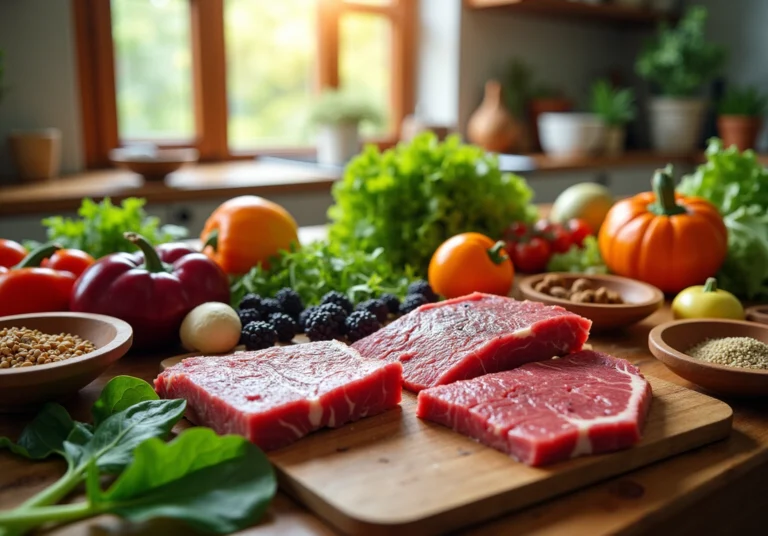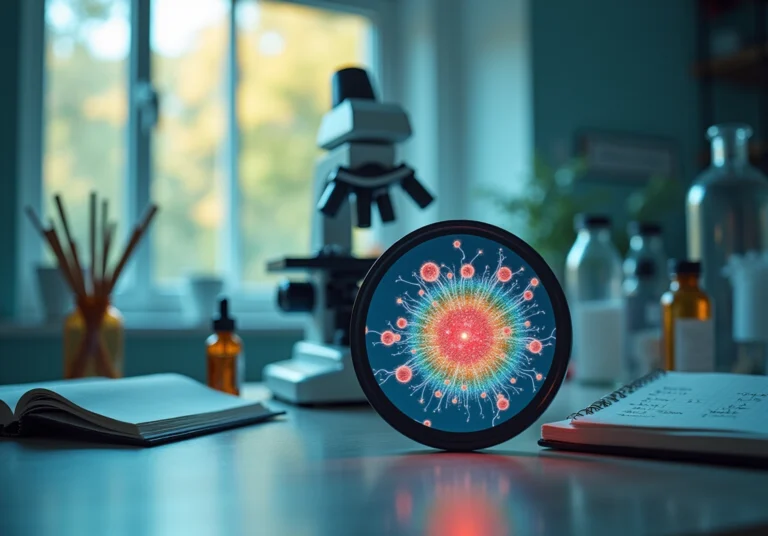Cure for Aging: Comparing Traditional and Innovative Therapies
Overview
This article provides a comparative analysis of traditional anti-aging therapies, such as lifestyle changes and herbal remedies, alongside innovative treatments like gene therapy and stem cell interventions. It highlights the distinct approaches each method employs to address aging. While traditional methods can enhance overall health, innovative therapies directly target the biological processes of aging. This direct approach potentially offers a genuine cure for aging, as evidenced by recent advancements and research outcomes.
Furthermore, readers are encouraged to explore these innovative therapies further, considering their implications for future health and longevity. The ongoing research in this field signifies a promising shift towards more effective anti-aging solutions.
Introduction
The quest for a cure for aging has long captivated both scientists and health enthusiasts. Traditional methods often yield limited results, despite their historical significance. While lifestyle changes and herbal remedies have formed the backbone of anti-aging strategies for centuries, innovative therapies emerging in 2025 promise to revolutionize this field with targeted, scientifically-backed solutions. As the conversation shifts towards advanced treatments like gene therapy and stem cell rejuvenation, a pressing question arises: can these cutting-edge approaches truly outperform their conventional counterparts? Or do they merely offer a new facade for the age-old struggle against time?
Understanding Aging: Traditional Approaches to Anti-Aging
Traditional approaches to anti-aging have primarily focused on lifestyle modifications, dietary practices, and herbal remedies, while a true cure for aging remains elusive. Historically, these methods have included:
- Calorie restriction
- The use of antioxidants
- The incorporation of specific nutrients thought to counteract the effects of time
For instance, diets rich in fruits, vegetables, and whole grains have been advocated for their high antioxidant content, which is thought to mitigate oxidative stress—a key factor in the aging process. Furthermore, traditional practices such as Traditional Chinese Medicine (TCM) have utilized herbs like ginseng and goji berries, which are believed to enhance vitality and longevity. However, while these methods can enhance overall health, they often lack the scientific support and targeted effectiveness that are crucial in the pursuit of a cure for aging. As a result, there is a rising interest in more innovative solutions.

Innovative Therapies in 2025: A New Era of Anti-Aging Solutions
In 2025, the landscape of anti-aging treatments has evolved dramatically, driven by groundbreaking technologies and rigorous scientific inquiry aimed at finding a cure for aging. Gene treatment has emerged as a frontrunner, demonstrating remarkable success as a potential cure for aging by extending lifespan and enhancing cellular function. Recent research suggests that gene treatment can significantly reverse age-related alterations, with some interventions resulting in a median lifespan increase of 109% in elderly mice, as observed by Lu et al. This novel method stands in stark contrast to conventional treatments, as it tackles the fundamental reasons for growing older and offers a potential cure for aging instead of just easing symptoms.
Stem cell treatments are also at the forefront of this revolution, with advancements in regenerative medicine showing potential for rejuvenating aged tissues and organs. These treatments aim to restore youthful function and vitality, offering hope for those seeking a cure for aging and wishing to counter the impacts of growing older.
Furthermore, compounds like NAD+ and psilocybin are gaining attention for their roles in promoting longevity. Research indicates that psilocybin may postpone biological processes by promoting neurogenesis and reducing inflammation, while NAD+ boosters are essential for sustaining cellular health and energy metabolism.
In addition, the emphasis on senolytic treatments, which specifically remove senescent cells associated with aging and age-related illnesses, is another encouraging path toward a potential cure for aging. Companies are actively creating medications that focus on these cells, potentially reversing some harmful effects of growing older and contributing to a cure for aging while enhancing overall health outcomes.
These innovative treatments signify a notable change from conventional techniques, highlighting not only aesthetic enhancements but also a comprehensive strategy for improving health and longevity. As the field continues to advance, the integration of these cutting-edge solutions is poised to redefine our understanding of the cure for aging and health management.

Comparative Analysis: Traditional Methods vs. Innovative Therapies
A comparison of conventional methods and novel treatments reveals significant differences in their strategies to achieve a cure for aging. Traditional methods often prioritize lifestyle changes and natural remedies, which can enhance overall health but may not yield immediate or targeted results. For instance, while a diet abundant in antioxidants promotes overall wellness, it may not effectively address specific indicators of maturity such as skin elasticity or cognitive decline. Notably, the American Society for Nutrition emphasizes the essential role of nutrition in supporting patients on GLP-1 treatment, highlighting that dietary interventions can greatly improve the effectiveness of conventional methods.
In contrast, innovative treatments are designed as a potential cure for aging by directly targeting the biological processes of senescence. For example, metformin, a diabetes medication, is currently being studied for its potential to slow aging processes and improve health outcomes, with ongoing clinical trials evaluating its efficacy against age-associated diseases. Stem cell treatment focuses on regenerating damaged tissues, while gene modification aims to correct age-related genetic mutations. However, these advanced treatments can entail higher costs and potential risks, including unforeseen side effects, as observed with options like rapamycin, which may lead to decreased red blood cells and hindered wound healing.
Ultimately, the choice between traditional and innovative methods in the pursuit of a cure for aging depends on individual health objectives, risk tolerance, and personal philosophies regarding natural versus synthetic interventions. Success narratives often highlight the efficacy of lifestyle modifications in boosting vitality, while others demonstrate the transformative power of advanced treatments, indicating that both routes can play crucial roles in the journey of healthy longevity. For example, anecdotal evidence from users of the Emsella chair for sexual rejuvenation illustrates the practical advantages of novel devices in enhancing quality of life. By integrating both lifestyle modifications and innovative therapies, individuals can establish a more holistic approach as they seek a cure for aging.

Choosing the Right Approach: Tailoring Anti-Aging Strategies to Individual Needs
Selecting the appropriate anti-aging method as a cure for aging requires thoughtful evaluation of personal health profiles, lifestyle elements, and individual preferences. For those who prioritize natural methods, conventional practices such as dietary modifications and herbal supplements may be more appealing. These methods can be easily integrated into daily routines and often come with fewer risks.
Conversely, individuals pursuing quicker outcomes or those facing specific age-related issues may benefit from advanced treatments that are seen as a potential cure for aging. Consulting with healthcare professionals can help assess unique needs and determine the most suitable strategies. Furthermore, combining elements from both traditional and innovative approaches may provide a holistic cure for aging. This allows individuals to enjoy the benefits of both worlds while effectively addressing their specific aging concerns.

Conclusion
The exploration of anti-aging therapies reveals a significant transformation in the quest for a cure for aging, transitioning from traditional methods to innovative solutions. Traditional approaches, such as dietary modifications and herbal remedies, have laid the groundwork for promoting overall health; however, they often fall short of providing targeted results. In contrast, the innovative therapies emerging in 2025, including gene treatment and stem cell therapies, promise to address the biological underpinnings of aging, offering a more direct path toward reversing age-related decline.
Key arguments highlight the differences between these two approaches:
- Traditional methods prioritize lifestyle changes and natural remedies that enhance health but may not effectively counter specific aging symptoms.
- Cutting-edge therapies aim to rejuvenate cellular function and restore vitality, showcasing remarkable advancements in the field.
The potential of compounds like NAD+ and psilocybin further emphasizes the shift towards a more scientific and targeted approach in the pursuit of longevity.
As individuals navigate their options for anti-aging strategies, it is crucial to consider personal health profiles and preferences. A balanced approach that integrates both traditional and innovative methods may provide the most comprehensive solution for those seeking to enhance their quality of life. Embracing the advancements in anti-aging research while honoring the wisdom of traditional practices can empower individuals to tailor their anti-aging journey effectively, ultimately leading to healthier and more fulfilling lives.
Frequently Asked Questions
What are traditional approaches to anti-aging?
Traditional approaches to anti-aging primarily focus on lifestyle modifications, dietary practices, and herbal remedies.
What specific methods are included in traditional anti-aging practices?
Specific methods include calorie restriction, the use of antioxidants, and the incorporation of specific nutrients believed to counteract aging effects.
How do fruits, vegetables, and whole grains contribute to anti-aging?
Diets rich in fruits, vegetables, and whole grains are advocated for their high antioxidant content, which is thought to mitigate oxidative stress, a key factor in the aging process.
What role does Traditional Chinese Medicine (TCM) play in anti-aging?
Traditional Chinese Medicine utilizes herbs like ginseng and goji berries, which are believed to enhance vitality and longevity.
Do traditional anti-aging methods have scientific support?
While traditional methods can enhance overall health, they often lack the scientific support and targeted effectiveness necessary for a true cure for aging.
Is there a current interest in new solutions for anti-aging?
Yes, there is a rising interest in more innovative solutions for anti-aging beyond traditional methods.






